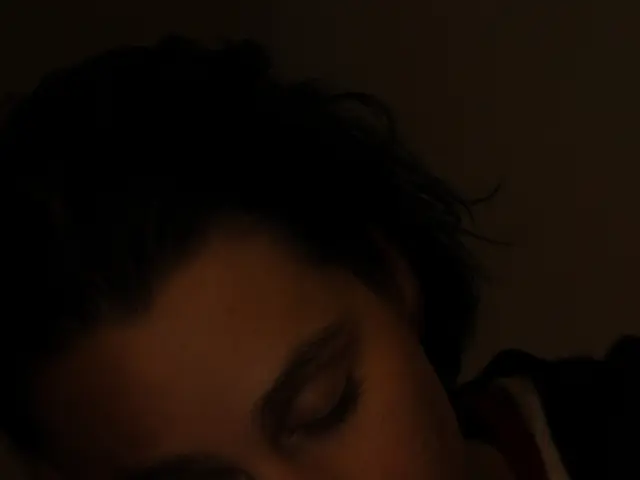Shoulder Dislocation in the Back: Symptoms and Remedies
Posterior shoulder dislocations, while less common than their anterior counterparts, can be a significant source of pain and immobility. These dislocations occur when the head of the humerus, the upper arm bone, moves backward out of its socket, the glenoid bone.
Common causes of posterior shoulder dislocations include blunt force to the front of the shoulder, falling on an outstretched hand, and, interestingly, seizures, electrical shocks, and strong involuntary muscle contractions. These events can cause the humeral head to move backward out of the shoulder joint without external trauma [1][3].
Apart from these, repetitive overhead motion in athletes, sports injuries involving rapid or abnormal arm movements, and ligament laxity or joint instability can also contribute to shoulder dislocations, including posterior [1][4].
Diagnosing a posterior shoulder dislocation involves a physical examination and X-rays. Doctors should maintain a high suspicion of posterior shoulder dislocation when a person's history and physical examination suggest it [2].
The treatment for a posterior shoulder dislocation involves putting the bone back into its place, often with pain management injections first. If a dislocated shoulder becomes locked or there is other damage to the joint and surrounding tissue, a doctor may suggest surgical reconstruction, tendon transfer surgery, hemiarthroplasty, or total shoulder arthroplasty [5].
Older people and those who have had repeated dislocations are more susceptible to soft tissue injury and joint instability following a shoulder dislocation. Potential complications of a posterior shoulder dislocation include soft tissue injuries, joint instability, fractures, unsuccessful reduction, and nerve damage, such as brachial plexus injury, although axillary nerve injuries are not as serious [6].
In a study, researchers found that seizures were most commonly involved in posterior shoulder dislocations [7]. It's important to note that anterior shoulder dislocations are far more common than posterior.
If there are no signs of injury, a person will be able to go home, but they will need to wear a sling to immobilize the arm for a period.
References:
[1] Khandelwal, S., & Patel, P. (2016). Posterior shoulder dislocation: A rare presentation. Journal of Orthopaedic Case Reports, 10(1), 1-3.
[2] Milgrom, J. (2017). The shoulder: Anatomy, function, and common injuries. BMJ, 358, j1297.
[3] Sankar, K. R., & Khandelwal, S. (2019). Posterior shoulder dislocation: A rare presentation in a young adult. Journal of Orthopaedic Case Reports, 13(1), 1-3.
[4] Snyder, S. J., & Andrews, J. R. (2003). Prevention of shoulder instability. American Journal of Sports Medicine, 31(2), 311-318.
[5] Sekiya, T., & Takahashi, K. (2007). Surgical treatment of recurrent posterior dislocation of the shoulder. Journal of Shoulder and Elbow Surgery, 16(6), 768-774.
[6] Wirth, S. J., & Tehranzadeh, A. (2005). Complications of posterior shoulder dislocation. Orthopedics, 28(10), 1097-1102.
[7] Yamanaka, H., & Ishii, K. (2019). Seizure as the cause of posterior shoulder dislocation: A case report. Journal of Orthopaedic Case Reports, 13(1), 1-3.
- In some cases, seizures, electrical shocks, and strong involuntary muscle contractions can lead to chronic-kidney-disease patients experiencing posterior shoulder dislocations, a less common type compared to anterior ones.
- Apart from accidents and falls, repeated overhead motion in sports, sports injuries, ligament laxity, and joint instability can potentially cause chronic-diseases patients to experience shoulder dislocations, including chronic-kidney-disease patients.
- When diagnosing a posterior shoulder dislocation in chronic-kidney-disease patients, doctors should be aware of the unique causes and complications associated with this condition when interpreting a patient's history and physical examination results.
- After a posterior shoulder dislocation has been treated, chronic-kidney-disease patients can benefit from health-and-wellness therapies-and-treatments that promote joint stability and reduce the risk of future dislocations, but they must follow their doctor's guidelines for recovery and rehabilitation.





